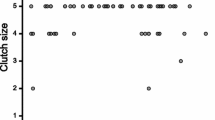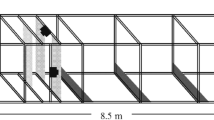Abstract
Empirical and theoretical studies have only recently begun to examine how females use complex multi-component displays when selecting mates. Superb fairy-wrens are well suited to the study of female choice because females have control over extra-group paternity and cuckold their mates at high rates, while males possess a variety of sexually selected traits. Available evidence suggests that females base their extra-group mate choice on the timing of male moult into breeding plumage or the onset of display. However, males continue to perform elaborate displays throughout the season, and direct most displays to females during their fertile period. We therefore conducted focal observations on fertile females to quantify the frequency of male display and used microsatellite genotyping to compare the role of display rate during the breeding season and the timing of male moult on female mate choice. We show that the addition of data on male display rate does not improve our ability to predict which males obtain extra-group paternity. The timing of male moult into breeding plumage remains the only predictor of male extra-group reproductive success. Nevertheless, we found that males displayed more to females that were unable to select extra-group mates on the basis of the timing of moult or the onset of display. This raises the possibility that there are circumstances when females use display rate to discriminate between potential extra-group sires. Overall this study supports the theoretical prediction that females are more likely to base their mate choice on reliable indicators of male quality such as fixed morphological traits and displays of endurance, in this case an early moult into breeding plumage and the performance of an elaborate display during the winter, than a flexible behavioural trait such as display rate during the breeding season.
Similar content being viewed by others
Author information
Authors and Affiliations
Additional information
Received: 26 January 2000 / Revised: 1 August 2000 / Accepted: 26 August 2000
Rights and permissions
About this article
Cite this article
Green, D., Osmond, H., Double, M. et al. Display rate by male fairy-wrens (Malurus cyaneus) during the fertile period of females has little influence on extra-pair mate choice. Behav Ecol Sociobiol 48, 438–446 (2000). https://doi.org/10.1007/s002650000258
Issue Date:
DOI: https://doi.org/10.1007/s002650000258




